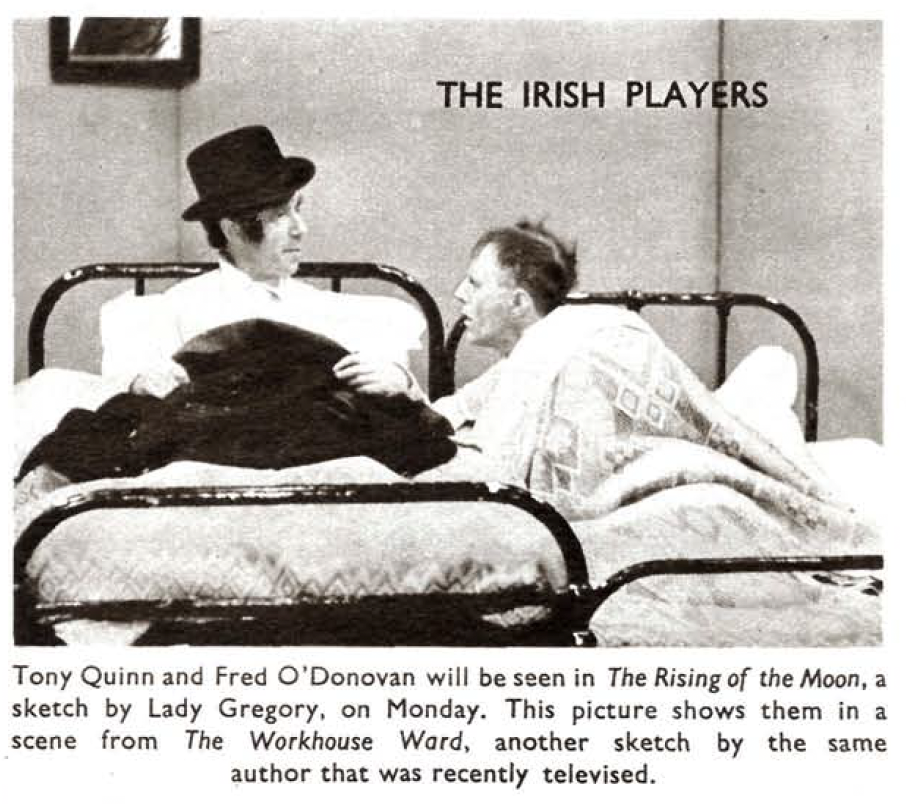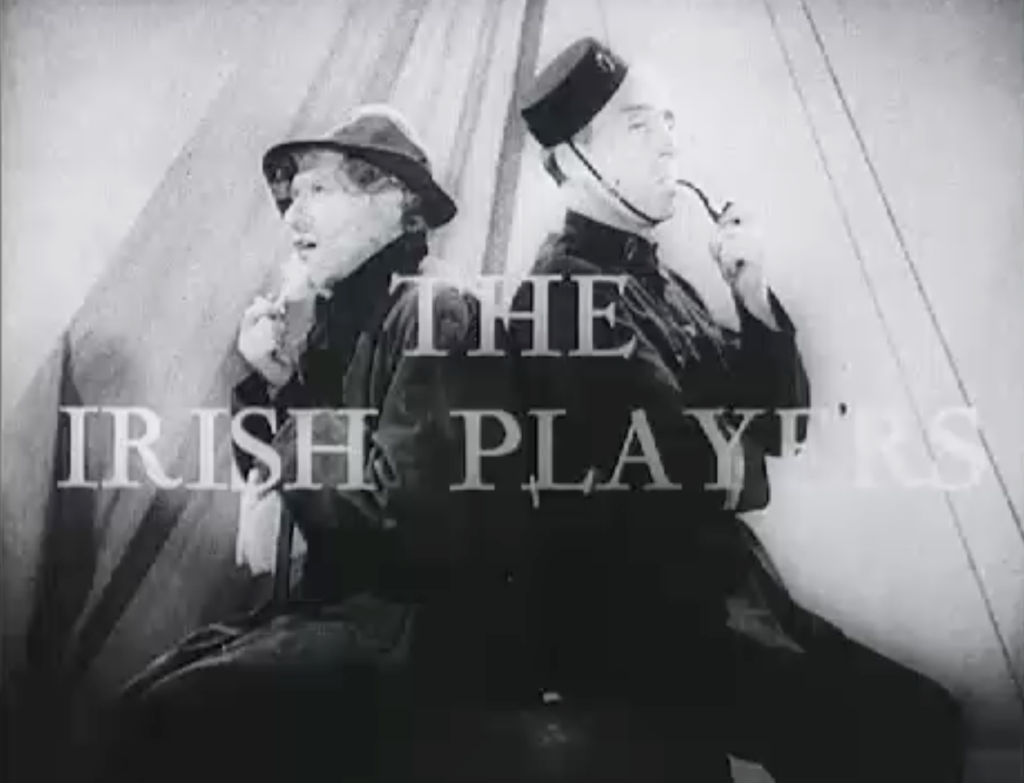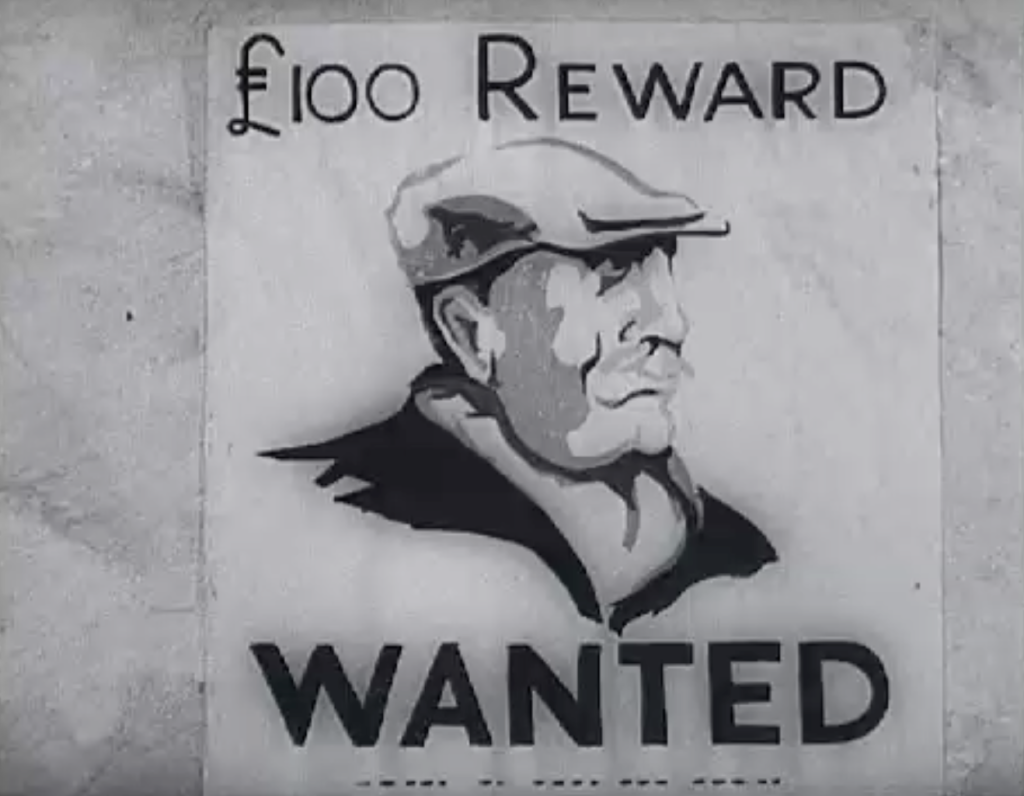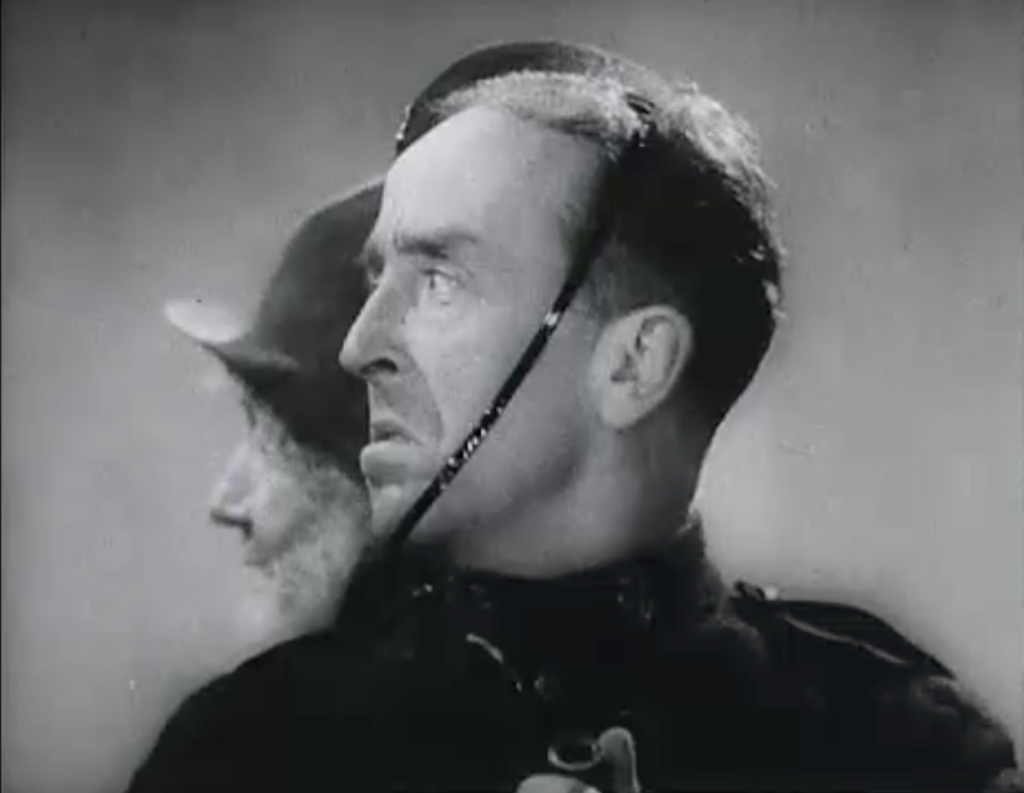OTD in early British television: 3 December 1937

John Wyver writes: on the afternoon of this day, Friday 3 December 1937, four members of The Irish Players came to Alexandra Palace at short notice to play Lady Gregory‘s one-act drama The Rising of the Moon. They were a late replacement for Laurence Olivier and Judith Anderson who were booked to give scenes from Michel Saint-Denis’s Old Vic production of Macbeth. But that theatre’s powerhouse, Lilian Baylis, had died just a week before and those giving the Scottish play, to which we will return, postponed their visit. Remarkably, The Rising of the Moon is one of the very few pre-war television dramas of which we have something like a moving image record.
The Irish Players was a loose association of actors living in London who had for the most part been members of Dublin’s Abbey Theatre company before and after the First World War. A group under that title toured the United States in 1911, seven years after the Abbey had been founded by the playwrights W.B. Yeats, Edward Martyn and Lady Gregory, along with funding for the most part contributed by Annie Horniman. In the late 1920s and 1930s a less structured Irish Players kept the tradition of Irish drama alive in London.
Harry Hutchinson and Fred O’Donovan, who played the Sergeant and the Ragged Man respectively on that December 1937 afternoon, were two of the stalwarts of the London Irish Players, along with Tony Quinn and Kathleen Drago, both of whom took a number of roles before the Alexandra Palace cameras, and Sara Allgood, who had also been a frequent contributor to the earlier 30-line service as well as appearing in several early films directed by Alfred Hitchcock.
The Rising of the Moon was first performed at the Abbey in March 1907 and is a quiet drama of Anglo-Irish relations. Three Irish policemen who are working for the British are looking for an escaped prisoner who is a rebel fighting for the cause of Irish independence. Left alone on watch, the Sergeant meets a ragged man who claims to be a ballad singer. As they talk the Sergeant recalls that as a boy he might have joined the rebel cause. When the ragged man is revealed as the convict, the Sergeant, moved by his memories, elects to let the prisoner escape and forego a promised reward of £100. The title is taken from a traditional Irish ballad that recalls a battle against the British during the 1798 Irish Rebellion.
The Irish Players had first come to Alexandra Palace a year earlier during the scramble to find drama for the first weeks of the new ‘high definition’ service. Producer George More O’Ferrall proposed working with the troupe had a number of modestly-scaled shows by heart, together with basic costumes and props. They began with Lady Gregory’s The Workhouse Ward before presenting The Coiner by Bernard Duffy and The Rising of the Moon, which before this December had also been presented in March 1937, twice, and in August.
A fragment of the production has been preserved in a reenactment created in April 1937 for what is known as the BBC Television Demonstration Film, which Dallas Bower shot to demonstrate some the attractions of the Television service. This was made to be broadcast every morning from the summer of 1937 onwards to give television showrooms something to present to potential customers. Bower filmed for a day with Hutchinson and O’Donovan, paying them each a fee of 12 guineas to replicate, albeit on 35mm film, the look of the production as it was staged in the studio. The following are framegrabs from Bower’s film.



Stalwart of the Irish Players Fred O’Donovan, who in 1918 had directed the first Irish feature film, Knocknagow [link to the film online at BFIPlayer], appeared in a range of other drama from AP, before in 1938 joining the staff there as a producer. He developed a distinctive method of staging studio drama working with very long and elaborately choreographed single takes. For more on his remarkable career, see my 2017 article ‘Exploring the Lost Television and Technique of Producer Fred O’Donovan’, Historical Journal of Film, Radio and Television, 37:1.
Leave a Reply